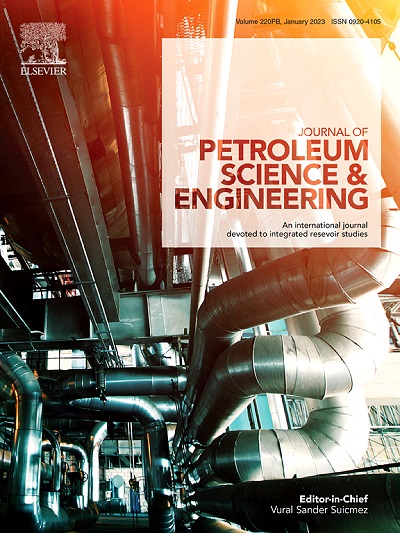Evaluation of L-ascorbic acid as a green low dosage hydrate inhibitor in water-based drilling fluid for the drilling of gas hydrate reservoirs
Abstract
Hydrate plug formation in the drilling fluid flow line is a significant issue in the oil and gas industry. Green hydrate inhibitors have recently gained much interest in flow assurance problems as they are being used as alternatives for existing hydrate inhibitors. The present study described that L-ascorbic acid (LA), a natural organic compound, has been identified as a Low Dosage Hydrate Inhibitor and has exhibited better results than Polyvinylcaprolactum (PVCap) and Polyvinylpyrrolidone (PVP). The temperature-augmented visual method and a self-fabricated set-up have been used to determine the first hydrate crystal formation in the tetrahydrofuran (THF)-water hydrate system. LA has shown a better inhibition effect in terms of induction time (i.e., >1440 min) than PVCap (119.67–180.67 min) and PVP (85.33–240.67 min). Carboxymethyl cellulose (CMC), polyanionic cellulose (PAC), xanthan gum (XG), and potassium chloride (KCl) are mixed with water to make the water-based drilling fluids used in this study. The R2 values showed a good agreement with the Herschel-Bulkley Model (R2 ranges from 0.993 to 0.999 for 0.5 w/v% PVCap and 0.1 w/v% PVP-containing fluids) than Bingham Plastic Model (R2 ranges from 0.836 to 0.952 for 0.1 w/v% PVP and base fluids). The MPE values are less for Herschel-Bulkley Model (From 1.418 to 6.015 for 0.5 w/v% PVCap and 0.1 w/v% PVP) than for Bingham Plastic (From 9.985 to 29.718 for 1.0 w/v% PVP and 0.1 w/v% PVP). Cross Model is also used to determine the zero and infinite shear viscosities for the formulated fluid system, which showed the viscosities are in the permissible range. These observations suggest that L-ascorbic acid (LA) may be an effective hydrate inhibitor in drilling fluids.

 求助内容:
求助内容: 应助结果提醒方式:
应助结果提醒方式:


